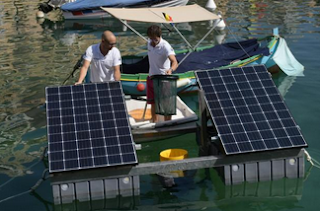Design Summary and Analysis (Final Draft)
Subject: Design Summary
and Analysis Final Draft
In the article “It's 2019
- Where’s My Super Suit”, Zelik (2019) explained about the significant and
unique features of the exoskeleton made by his team. Furthermore, the writer
described the current commercial versions of exoskeletons. The writer
emphasizes that the main function of an exoskeleton is to reduce the risk of
muscular injuries. However, current designs are not appealing to the public
because they are cumbersome and costly. Hence, Zelik and his team endeavored to
create a new prototype that boasts a series of new distinct features. One such
feature includes a “clothing-like” appearance that resembles a super-suit
consisting of a vest, switch, elastic bands and a pair of shorts. Another
feature promotes free movement by switching off the assistance. The design also
lacks batteries, motors, and protruding parts. This feature is essential as it
provides a lightweight and seamless design. Lastly, the writer Zelik (2019)
claims that through laboratory tests, it was discovered that turning on the
suit reduced substantial loadings on the lower back.
Despite pointing out the
advantages of his prototype and the benefits of using exoskeletons, the writer
did not inform the readers of the many crucial repercussions when using the
exoskeleton. These repercussions are an important aspect of developing the
ideal exoskeleton, one that Zelik’s team is trying to produce.
The first critical
repercussion that users will face will be the strains on joints. An exoskeleton
helps to provide support to whichever muscle group the user is engaging. With
that said, the joints will be forced to work harder while the user is using the
exoskeleton. According to de Looze et al., (2015, as cited in McGowan 2018),
studies have shown that with the help of exoskeleton, muscle labour is reduced
by 10 to 40 percent, providing support to the individual. However, there were
unforeseen consequences such as “increased muscle activity of other joints,
specifically the legs” (McGowan, 2018). This would promote the accumulation of
stress and eventually damaging their joints. Hence, with the focus on light and
seamless design, Zelik and his team could solve this problem.
The next imperative
repercussion is the effect that exoskeleton can have on the postural muscle.
Users of the exoskeleton have to work harder to maintain posture stability
which leads to increase engagement of the Erector Spinae (ES) and Transverse
Abdominis (TA) muscles (Theurel et al., 2018). As stated by Sylla et al.
(2014), while using a “unilateral upper-limb exoskeleton”, many users had to
adjust their “postural strategy”. A study showed that while wearing the
exoskeleton, users had to put in more effort to shift their center of gravity
to perform a task (Sylla et al., 2014, as cited in Theurel et al., 2018).
Higher engagement of postural muscles could progress into back pain. Nonetheless,
Zelik and his team’s aim of decreasing the weight and restrictive forces of the
prototype could potentially reduce stress on postural muscles.
The final vital
repercussion will be the discomfort that the user will experience while using
the exoskeleton. This is mainly caused by the straps and joints of the
equipment. Researchers developed sensors to measure the pressure created by
“physical human-machine interfaces” and provide an assessment of the level of
skin or body pressure caused by the fastening straps (Tamez-Duque et al., 2015,
as cited in Gorgey 2015). Tamez-Duque et al. (2015) state that the “thigh
straps” could lead to pressure going from 80 to 120 mmHg (millimeters of
Mercury) while engaging in upright movements. This would affect around 70
percent of people with spinal cord injury as they are vulnerable to skin
damage, even with a small amount of shear (Saladin et al., 2009, Groah et al.,
2015, as cited in Gorgey, 2018). With all that being said, the implementation
of the switch made by Zelik’s team would give users the choice to switch off
the assistance, leading to a decrease in the strain caused by the straps.
In conclusion, these
repercussions caused by the exoskeleton affects the user in multiple ways and
would be one of the reasons why some potential users are not ready to accept
exoskeletons as a way of life. Zelik (2019) and his team is going in the right
direction by making the design more ergonomic and functional, pushing the
potential of the exoskeleton to a whole new level.
References
Gorgey, A. S. (2018). Robotic exoskeletons: The current pros and cons. World
journal of orthopedics, 9(9), 112. doi: 10.5312/wjo.v9.i9.112
McGowan, B. (2018). Industrial Exoskeletons: What You're Not Hearing. Occupational
Health & Safety, 1. Retrieved from
https://ohsonline.com/Articles/2018/10/01/Industrial-Exoskeletons-What-Youre-Not-Hearing.aspx?m=1&Page=1
Theurel, J., Desbrosses, K., Roux, T., & Savescu, A. (2018).
Physiological consequences of using an upper limb exoskeleton during manual
handling tasks. Applied ergonomics, 67, 211-217. doi: 10.1016/j.apergo.2017.10.008
Zelik, K (2019). It's 2019 - where’s my super
suit. Retrieved and adapted from https://theconversation.com/its-2019-wheres-my-supersuit-115679
(EDITED)

Comments
Post a Comment